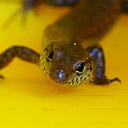Member-only story
Patterns in Space and Time
How seashells get their colour
I gathered shells upon the sand,
Each shell a little perfect thing,
So frail, yet potent to withstand
The mountain-waves’ wild buffeting.
Edith Nesbit, Sea-Shells
No 18th century cabinet of curiosity was complete without a collection of shells. The finest came from tropical oceans: cones patterned with flags and dashes, cowries as smooth as glass, and volutes covered in mysterious writing. Some were rare — and there were tales of collectors buying and then crushing specimens to preserve the value of the ones already in their collections — but all were beautiful and strange.
Humans have always prized shells. About 75,000 years ago, in Blombos Cave, South Africa, people collected Tick Shell (Nassarius kraussianus, Nassariidae) and strung them together on sinews to make necklaces. The millennia-old tradition continues across the world. In lutruwita/Tasmania, tiny shells are collected from kelp beds and threaded on cotton.
But how are those marvellous colour patterns formed?
Dot by dot along the growing edge of the shell, building up the pattern over time.
The shell is made up of three layers. From the outside in, they are the periostracum (a protein coat), ostracum (the main part of the shell)…
